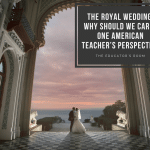Have you signed up for The Educator’s Room Newsletter? Click here and support independent journalism!
As an English language arts teacher of many, many years, poetry has always been one of my favorite subjects to teach my students. Poetry brings out the best in students’ language abilities and challenges them to write in a way that goes against the norm. Is it ok if their poetry does not rhyme? Absolutely. What if their capitalization and punctuation could be better? Tell them about e.e. cummings. Writing poetry allows students to express themselves freely without the constraints of a typical writing lesson. I have learned that many of my students need and appreciate the outlet poetry writing provides for them. Students who are traditionally not strong writers have produced some of the most original, beautiful poetry I have ever read. Often, this is achieved with little to no prompting or guidance on my part. Their words emerge so freely and quickly that they create an amazing poem before realizing it.
April was first recognized as National Poetry Month in 1996. The recognition encourages people to express their thoughts and feelings through poetry and highlights a genre of writing that is often overlooked.
If you are looking to celebrate National Poetry Month in your classroom, below are some fresh, newly released books of poetry to engage your students and encourage their own words of poetry to flow more freely:
- The Joy of Odd: Rhymes About Unlikely Friendships and the Power of Acceptance by Count V. Wolfsbane: Recommended for grades K-7, this beautifully illustrated book offers students a lesson in empathy and practicing kindness. Unlikely pairs of friends bond together in the rhythmic tone of this book, proving that there is someone out there for everyone. This book would be an excellent opener for a poetry lesson on writing about feelings and acceptance.
- Welcome Ramadan by Sara Sarafraz: In my classroom, holidays are such an opportune time to have students write poetry; the mood of the holiday brings out the excitement in their writing. Published just at the right time to celebrate Ramadan 2023, Welcome Ramadan is a book of poetry that students in any grade level can enjoy. Even students who do not celebrate Ramadan can appreciate the rhymes in this book, and they will learn about the holiday in a fun and memorable way.
- I am Still Learning: But Watch Me Grow by Lynze Norman and her 3rd-grade students: the most remarkable thing about this book is that 3rd graders wrote it! Lynze Norman, a 3rd-grade teacher at McGill Elementary in San Angelo, Texas, believed her students should be allowed to express their creativity, leading to the publication of this book. Students will surely find a connection to these upbeat poems written by other students at or near their age.
- Little Brown Kings: Poems and Affirmations by Norman Thomas: this book of poetry was written to inspire, empower, and protect growing African American boys. Thomas, a Black author, turned his experiences as an African American boy into words to successfully guide his son, Jason, through grade school and adolescence. Although this book is geared toward young African American men of elementary school age, any student in grades K-12 can appreciate Thomas’s insightful experiences and advice.
- A Bit of Earth by Karuna Riazi: This book is an excellent example of poetry intertwined with prose, making it a strong mentor text to use when teaching poetry. It shows students that poetry does not always have to have a typical rhyme pattern or an exact number of verses; in fact, this book celebrates originality. The book focuses on a Pakistani girl who immigrates to Long Island after the death of her parents, finally finding a place where she feels at home. This book is geared toward students 8-12 years of age, making it an ideal choice for grade 3-6 classrooms.
As a proud member of Generation X, it saddens me to know that many of the poetry books I enjoyed so much as a child, like Shel Silverstein’s A Light In the Attic, have been banned and cannot be shared with future generations. Nevertheless, every poem in that book resonates deeply with me, and as a teacher, I make it my mission to find poetry as memorable as Silverstein’s to share with my students.
Poetry can be sad. Poetry can be happy. It can be emotional, scary, and exciting. Exposing our students to these feelings through verse prepares them to deal with them in real-life experiences. In addition, teaching poetry that broaches today’s most controversial topics, such as racism, religion, and gender identity, allows students to experience diverse perspectives on these important topics. Poetry helps students grasp the need to rely on each other for comfort, acceptance, and understanding. Our students deserve an outlet to express their creativity and feelings; poetry is one of the best outlets we, as teachers, can share with them.

About the author: Ashley Chennault is currently a freelance writer and 4th-grade teacher in the small coastal town of Ocean Springs, Mississippi. Ashley is in her 18th year of teaching and holds a master of arts degree in elementary education. In addition, she became Nationally Board Certified in 2020. In her free time, she enjoys her second job as a contract grant writer for philanthropy corporations, boating, beaching, cooking, watching her teenage sons play sports, and spending time with her three adopted wiener dogs, Georgie, Henry, and Tripp.

Editor’s Note: If you enjoyed this article, please become a Patreon supporter by clicking here.





